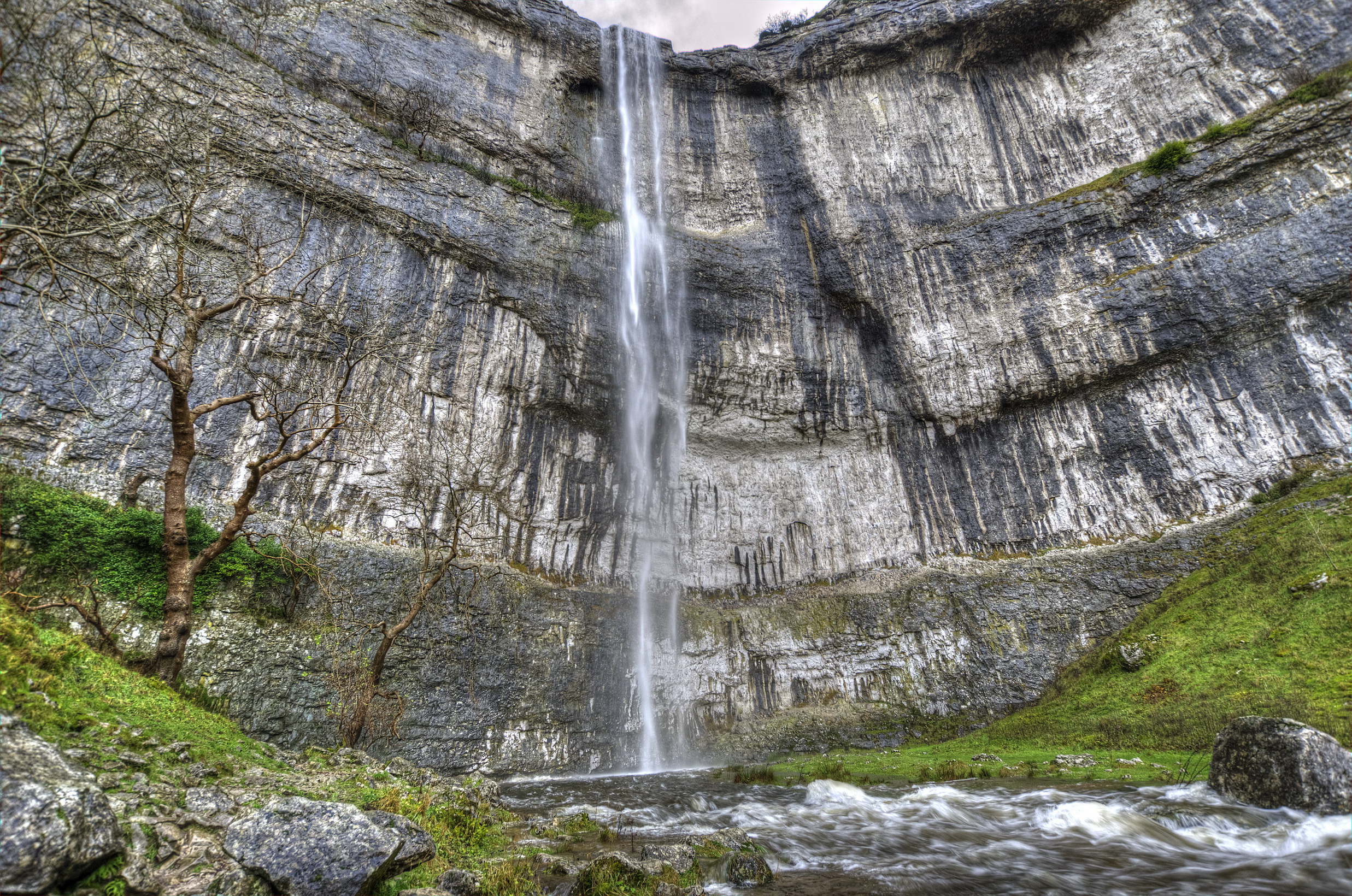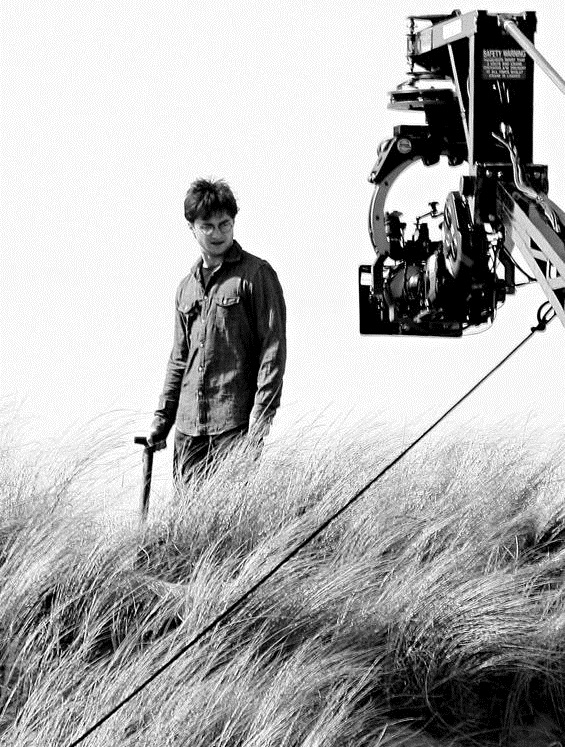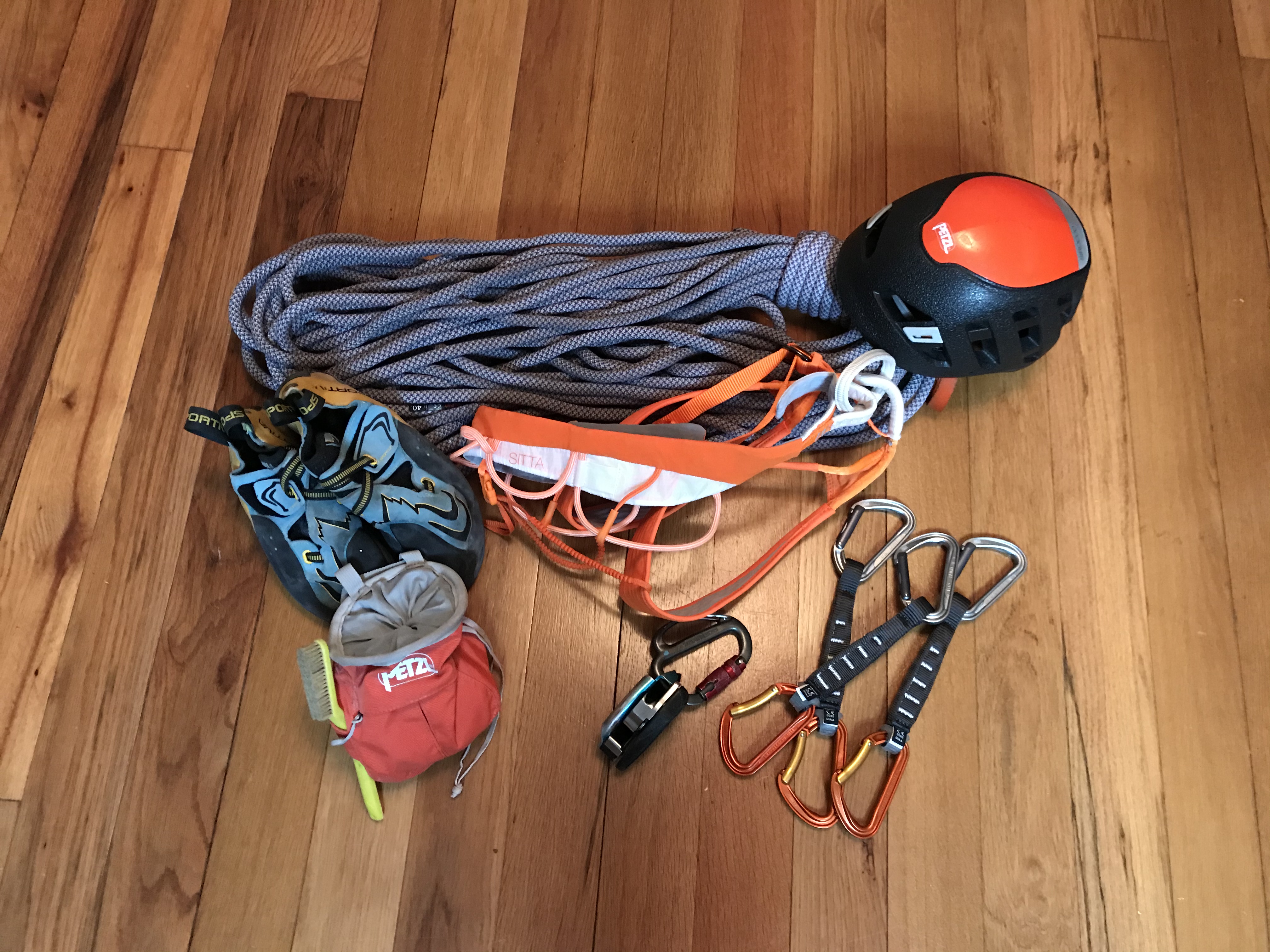|
Malham Cove
Malham Cove is a large curved limestone formation north of the village of Malham, North Yorkshire, England. It was formed by a waterfall carrying meltwater from glaciers at the end of the last Ice Age more than 12,000 years ago. Today it is a well-known beauty spot and rock climbing crag within the Yorkshire Dales National Park. A large limestone pavement lies above the cove. Geology The cove was formed by a large Ice Age river that fell at this point as a cataract. The water drop was high and more than wide. The water flowing over the waterfall created the curved shape of the cove because the lip was more heavily eroded than the sides. A stream named Malham Beck originates on Malham Moor and emerges from a cave at the bottom of the cove. This is a different stream from the stream that flows out of Malham Tarn north of the cove. This latter stream goes underground at 'Water Sinks' about before the top of the cove and does not emerge until Aire Head, south of Malham. The ... [...More Info...] [...Related Items...] OR: [Wikipedia] [Google] [Baidu] |
North Yorkshire
North Yorkshire is the largest ceremonial counties of England, ceremonial county (lieutenancy area) in England, covering an area of . Around 40% of the county is covered by National parks of the United Kingdom, national parks, including most of the Yorkshire Dales and the North York Moors. It is one of four counties in England to hold the name Yorkshire; the three other counties are the East Riding of Yorkshire, South Yorkshire and West Yorkshire. North Yorkshire may also refer to a non-metropolitan county, which covers most of the ceremonial county's area () and population (a mid-2016 estimate by the Office for National Statistics, ONS of 602,300), and is administered by North Yorkshire County Council. The non-metropolitan county does not include four areas of the ceremonial county: the City of York, Middlesbrough, Redcar and Cleveland and the southern part of the Borough of Stockton-on-Tees, which are all administered by Unitary authorities of England, unitary authorities. ... [...More Info...] [...Related Items...] OR: [Wikipedia] [Google] [Baidu] |
The Trip (2010 TV Series)
''The Trip'' is a 2010 British television sitcom series and feature film directed by Michael Winterbottom, starring Steve Coogan and Rob Brydon as fictionalised versions of themselves on a restaurant tour of northern England. The series was edited into feature film format and premiered at the Toronto International Film Festival in September 2010. The full series was first broadcast on BBC Two and BBC HD in the United Kingdom in November 2010. Both the TV series and film received very positive reviews. Three further series followed. ''The Trip to Italy'' was broadcast on BBC Two in 2014, ''The Trip to Spain'' was filmed in 2016 and broadcast on Sky Atlantic in 2017, and ''The Trip to Greece'' was filmed in 2019 and aired on Sky One in 2020''.'' Like the first series, the second, third and fourth were each edited into feature films. Winterbottom, Coogan and Brydon stated that ''The Trip to Greece'' would be the final series for the show. Origins Coogan and Brydon's roles as ficti ... [...More Info...] [...Related Items...] OR: [Wikipedia] [Google] [Baidu] |
Harry Potter And The Deathly Hallows – Part 1
''Harry Potter and the Deathly Hallows – Part 1'' is a 2010 fantasy film directed by David Yates from a screenplay by Steve Kloves. The film is the first of two cinematic parts based on the 2007 novel '' Harry Potter and the Deathly Hallows'' by J. K. Rowling. It is the seventh instalment in the ''Harry Potter'' film series and the sequel to ''Harry Potter and the Half-Blood Prince'' (2009). The film stars Daniel Radcliffe as Harry Potter, with Rupert Grint and Emma Watson, respectively, reprising roles as Harry's best friends Ron Weasley and Hermione Granger. The story follows Harry Potter, who has been asked by Dumbledore to find and destroy Lord Voldemort's secret to immortality – the Horcruxes. Filming began on and was completed on . ''Harry Potter and the Deathly Hallows – Part 1'' was released in 2D cinemas and IMAX formats in the United Kingdom and in the United States on 19 November 2010, by Warner Bros. Pictures. The film received positive reviews with cr ... [...More Info...] [...Related Items...] OR: [Wikipedia] [Google] [Baidu] |
Emily Brontë's Wuthering Heights
''Emily Brontë's Wuthering Heights'' is a 1992 feature film adaptation of Emily Brontë's 1847 novel ''Wuthering Heights'' directed by Peter Kosminsky. This was Ralph Fiennes's film debut. This particular film is notable for including the oft-omitted second generation story of the children of Cathy, Hindley and Heathcliff. Plot The story is that of the fierce passionate love between the moor-loving, wild girl Catherine Earnshaw and the poor equally wild spirit her father takes in to be raised as her brother, Heathcliff. When her father dies, Catherine's biological brother, jealous that Heathcliff was their father's favorite, treats Heathcliff as a servant and has him beaten. The story tracks the story of Healthcliff's and Catherine's fierce love and Heathcliff's rage, pain, jealousy and vengeance that he pitilessly enacts on the man that gets in the way of his marrying her, Edgar Linton. Heathcliff and Catherine's love is painted in intense Romantic tones in contrast to the sup ... [...More Info...] [...Related Items...] OR: [Wikipedia] [Google] [Baidu] |
Seven Natural Wonders
''Seven Natural Wonders'' is a television series that was broadcast on BBC Two from 3 May to 20 June 2005. The programme takes an area of England each week and, from votes by the people living in that area, shows the 'seven natural wonders' of that area in a programme. Episodes and locations The series covered eight regions of England, having originated as a 'local' television project. There was also a series, looking at a similar selection of 'man-made' wonders for each of eleven regions of England. References External links ''Seven Natural Wonders'' at BBC Online BBC Television shows Cultural lists, 7 Seven Natural Wonders Nature-related lists 2005 British television series debuts 2005 British television series endings {{BBC-tv-prog-stub ... [...More Info...] [...Related Items...] OR: [Wikipedia] [Google] [Baidu] |
Gordale Scar
Gordale Scar is a limestone ravine northeast of Malham, North Yorkshire, England. It contains two waterfalls and has overhanging limestone cliffs over high. The gorge could have been formed by water from melting glaciers or a cavern collapse. The stream flowing through the scar is Gordale Beck, which on leaving the gorge flows over Janet's Foss before joining Malham Beck downstream to form the River Aire. A right of way leads up the gorge, but requires climbing approximately of tufa at the lower waterfall. Notable visitors William Wordsworth wrote in the sonnet ''Gordale'', "let thy feet repair to Gordale chasm, terrific as the lair where the young lions couch". James Ward created a large and imaginative painting of it that can be seen in Tate Britain. J. M. W. Turner also painted a picture of it in 1816, also to be seen in Tate Britain. Colin Tudge references this feature and James Ward's painting in his book ''The Time Before History''. The waterfall was used as an ex ... [...More Info...] [...Related Items...] OR: [Wikipedia] [Google] [Baidu] |
Steve McClure
Steve McClure (born 25 July 1970) is a British rock climber and climbing author, who is widely regarded as Britain's leading and most important sport climber for a period that extends for over two decades, starting from the late 1990s. In 2017, he created ''Rainman'', Britain's first-ever sport route, and by that stage was responsible for developing the majority of routes graded and above in Britain. McClure has also been one of the most successful British traditional climbers, and British onsight climbers (in both sport climbing and traditional climbing). Climbing career McClure started climbing early as both parents were keen climbers, and by age 16 was onsighting E6. McClure did not take up British sport climbing until he was 24, and said that it took him time to adapt saying, " n sportit's possible to commit 100%, rather than considering the risk and the danger n traditional. He went from onsighting E6 to onsighting ; within one year was doing redpoints in a day; wi ... [...More Info...] [...Related Items...] OR: [Wikipedia] [Google] [Baidu] |
Sport Climbing
Sport climbing (or Bolted climbing) is a form of rock climbing that relies on permanent anchors (or bolts), permanently fixed into the rock for climber protection, in which a rope that is attached to the climber is clipped into the anchors to arrest a fall; it can also involve climbing short distances with a crash pad underneath as protection. This is in contrast to traditional climbing where climbers must place removable protection as they climb. Sport climbing usually involves lead climbing and toproping techniques, but free solo and deep-water solo (i.e. no protection) climbing on sport routes is also sometimes possible. Since sport climbing routes do not need to follow traditional climbing route lines where protection can be placed into natural features (e.g. cracks), they tend to follow more direct lines up crags. This aspect, in addition to the lack of any need to install protection during the climb (e.g. the sport climber just clips into pre-installed bolts along th ... [...More Info...] [...Related Items...] OR: [Wikipedia] [Google] [Baidu] |
Traditional Climbing
Traditional climbing (or Trad climbing) is a style of rock climbing in which the climber places all the necessary protection gear required to arrest any falls as they are climbing, and then removes it when the pitch is complete (often done by the second/follow-on climber). Traditional bolted aid climbing means the bolts were placed while on lead and/or with hand drills (the bolts tend to be much farther apart than for sport climbs). Traditional climbing carries a higher level of risk than bolted sport climbing, as the climber may not have placed the safety equipment correctly while trying to ascend the route; for some of the world's hardest climbs (e.g. '' Realization/Biographie''), there may not be sufficient cracks or features in the rock that can accept protection gear, and the climb can only be safely attempted by bolting as a sport climb. Overview Characterizing climbing as ''traditional'' distinguishes it from bolted climbing—either trad bolted or sport climbing ... [...More Info...] [...Related Items...] OR: [Wikipedia] [Google] [Baidu] |
Climbing
Climbing is the activity of using one's hands, feet, or any other part of the body to ascend a steep topographical object that can range from the world's tallest mountains (e.g. the eight thousanders), to small boulders. Climbing is done for locomotion, sporting recreation, and for competition, and is also done in trades that rely on ascension; such as emergency rescue and military operations. Climbing is done indoors and outdoors and on natural (e.g. rock and ice) and artificial surfaces. Professional mountain guides or rock climbing guides (e.g. the UIAGM), were a significant element in developing the popularity of the sport in the natural environment, and remain so today. Since the 1980s, the development of competition climbing and the availability of artificial climbing walls have dramatically increased the popularity of rock climbing as a sport and led to the emergence of professional rock climbers, such as Wolfgang Güllich, Chris Sharma, Lynn Hill and Catherine ... [...More Info...] [...Related Items...] OR: [Wikipedia] [Google] [Baidu] |
Pennine Way
The Pennine Way is a National Trail in England, with a small section in Scotland. The trail stretches for from Edale, in the northern Derbyshire Peak District, north through the Yorkshire Dales and Northumberland National Park and ends at Kirk Yetholm, just inside the Anglo-Scottish border, Scottish border. The path runs along the Pennines, Pennine hills, sometimes described as the "backbone of England". Although not the United Kingdom's longest National Trail (this distinction belongs to the South West Coast Path), it is according to The Ramblers "one of Britain's best known and toughest". History The path was the idea of the journalist and rambler Tom Stephenson (activist), Tom Stephenson, inspired by similar trails in the United States of America, particularly the Appalachian Trail. Stephenson proposed the concept in an article for the ''Daily Herald (UK newspaper), Daily Herald'' in 1935, and lobbied Parliament for the creation of an official trail. The walk was planned ... [...More Info...] [...Related Items...] OR: [Wikipedia] [Google] [Baidu] |





